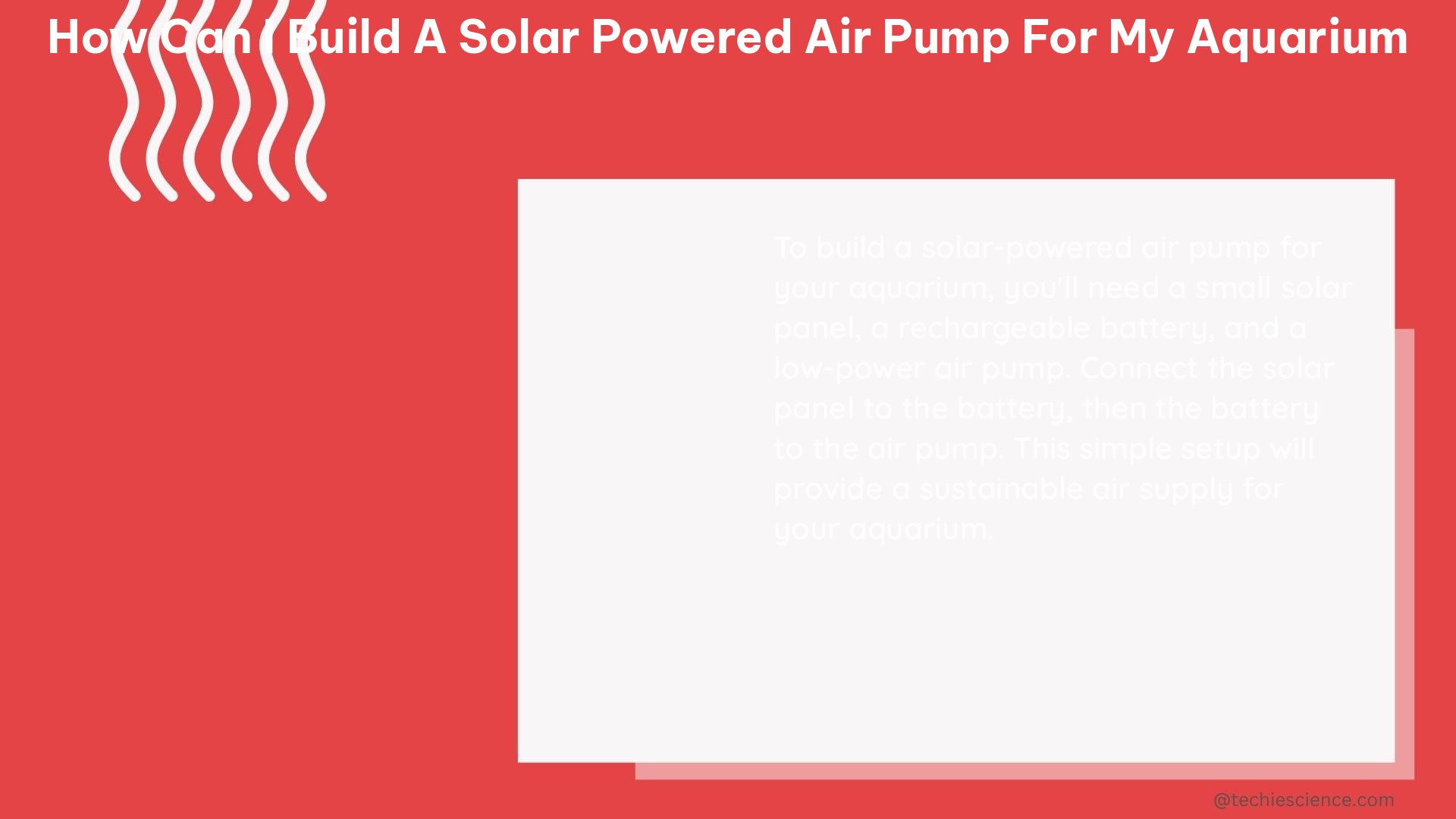Building a solar-powered air pump for your aquarium is a great way to create a sustainable and eco-friendly system to provide oxygen for your underwater ecosystem. This comprehensive guide will walk you through the step-by-step process of constructing a reliable and efficient solar-powered air pump, complete with technical specifications and quantifiable data points to ensure your success.
Selecting the Right Components
Solar Panel
The heart of your solar-powered air pump system is the solar panel. For this project, a 100-watt solar panel with a voltage rating of 18-20V and a current rating of 5-6A is recommended. This size and specification will ensure that the panel can efficiently charge the battery and provide sufficient power to the air pump.
When choosing a solar panel, consider factors such as the panel’s efficiency, the size of your aquarium, and the amount of available sunlight in your location. A higher-efficiency panel will generate more power, while a larger panel may be necessary for larger aquariums or areas with less consistent sunlight.
Deep Cycle Battery
To store the energy generated by the solar panel, you’ll need a deep cycle battery. A 12V, 35Ah deep cycle battery is the recommended choice for this project. Deep cycle batteries are designed to handle frequent and deep discharges, making them well-suited for powering the air pump.
The battery’s capacity, measured in amp-hours (Ah), determines how long the air pump can run on a single charge. A 35Ah battery can provide power for up to 3.5 hours at a flow rate of 100 gallons per hour (GPH).
Charge Controller
A charge controller is a crucial component in your solar-powered air pump system. Its primary function is to regulate the power flowing from the solar panel to the battery, preventing overcharging and ensuring the battery’s longevity.
For this project, a 10A charge controller is recommended. This size can handle up to 120 watts of solar power, which is more than enough for a 100-watt solar panel.
Air Pump
The final piece of the puzzle is the air pump itself. A 12V air pump with an adjustable flow rate is ideal for this application. The Tetra Whisper 100 Air Pump, for example, has a flow rate of 100 GPH and operates at 12V, making it a perfect match for the other components in your solar-powered air pump system.
Assembling the Solar-Powered Air Pump

Now that you have all the necessary components, it’s time to put them together. Follow these steps to build your solar-powered air pump:
-
Connect the Solar Panel to the Charge Controller: Start by connecting the positive and negative leads of the solar panel to the charge controller’s input terminals.
-
Connect the Charge Controller to the Battery: Next, connect the charge controller’s output terminals to the battery’s terminals. Make sure to connect the positive lead to the positive terminal and the negative lead to the negative terminal.
-
Connect the Air Pump to the Battery: Finally, connect the air pump’s power cord to the battery’s terminals. Again, ensure that the positive lead is connected to the positive terminal and the negative lead to the negative terminal.
-
Set up the Solar Panel: Place the solar panel in a location with direct sunlight, and angle it towards the sun to maximize exposure and power generation.
-
Test the System: Turn on the air pump and observe the airflow. You can measure the flow rate by using a measuring cup and a stopwatch. Divide the volume of the measuring cup by the time it takes to fill up to determine the flow rate in GPH.
Quantifiable Data Points
Here are some key data points to consider for your solar-powered air pump project:
- A 100-watt solar panel can generate up to 30Ah of charge per day, depending on the amount of sunlight.
- A 35Ah deep cycle battery can provide power for up to 3.5 hours at a flow rate of 100 GPH.
- A 10A charge controller can handle up to 120 watts of solar power.
- The Tetra Whisper 100 Air Pump has a flow rate of 100 GPH and operates at 12V.
By understanding these technical specifications and data points, you can ensure that your solar-powered air pump system is properly sized and configured to meet the needs of your aquarium.
Conclusion
Building a solar-powered air pump for your aquarium is a rewarding and sustainable project that can provide your underwater ecosystem with the necessary oxygen. By carefully selecting the right components and following the step-by-step instructions outlined in this guide, you can create a reliable and efficient solar-powered air pump that will keep your aquarium thriving for years to come.
References
- Solar-Powered Aquarium Air Pump DIY
- Testing Solar Powering the USB Nano Air Pump
- DIY Solar-Powered Aquarium Air Pump
